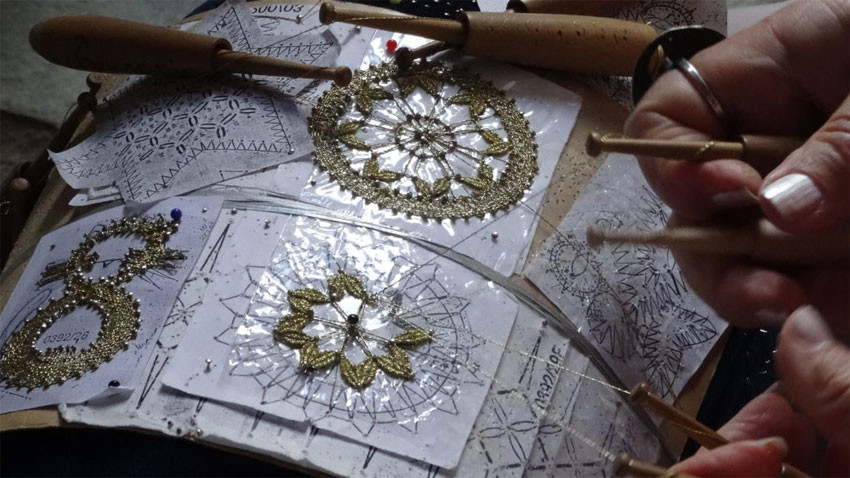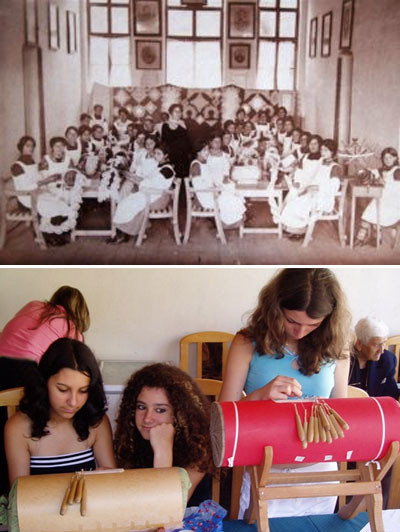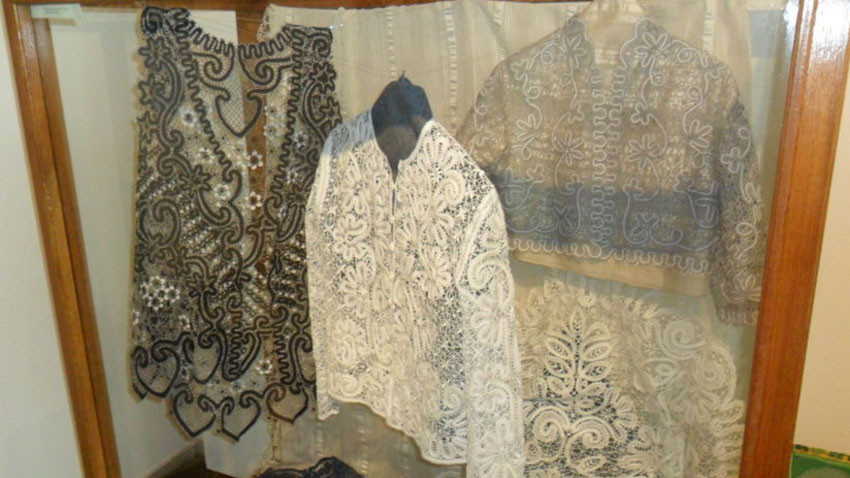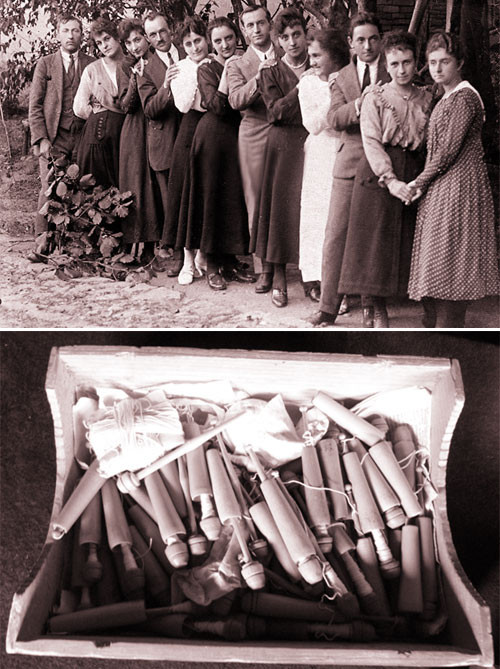When it comes to lace work, many people think of one-hook crochet work. However, there are few masters of the craft of creating traditional Kalofer lace. The craft emerged in Bulgaria’s Kalofer at the end of the 19th century. The knitting technology of the Kalofer lace is similar to the so-called "Brussels lace". The difference is that the Kalofer lace incorporates ornaments from nature - roses, tulips, sunflowers, edelweiss, and wheat. They give the lace a typical Bulgarian look.

In Kalofer they used to call it "the white magic" because in the past the sale of lace provided the livelihood of the whole town. After Kalofer was burned down and left in ruin during the Russian-Turkish War of Liberation (1877-1878), lace became the main means of providing livelihood.
 In 1910 Kalofer opened the first and only existing in Bulgaria Lacework School "Trudolubiye".1,800 women and girls took part in the two-year training course. The craft has been preserved in Kalofer to this day. This unique craft has a dedicated local holiday, when masters of lacework from all over the country gather in Kalofer.
In 1910 Kalofer opened the first and only existing in Bulgaria Lacework School "Trudolubiye".1,800 women and girls took part in the two-year training course. The craft has been preserved in Kalofer to this day. This unique craft has a dedicated local holiday, when masters of lacework from all over the country gather in Kalofer.
In order to preserve and promote the Kalofer lace, on August 15th, a Creative Center opened in the city, where lace and documents related to fine knitting will be stored. "Our goal is to present lace as contemporary art, but also as source of livelihood in Kalofer," Antoaneta Parvanova, chairwoman of the “Hristo Botev” Community Center in Kalofer told us:
"We thought lace should have a home in Kalofer. The Plovdiv 2019 Foundation supported us in creating the visual identity of the Kalofer Lace Center. All activities and materials, as well as repairs to the building have been done thanks to donations of citizens and the community center budget. Many volunteers took part in the work and everything here has been created by Kalofer citizens with much love, desire and dedication. In order to appreciate this art, people need to be aware of the technology used and the work done. Otherwise they compare it to machine knitting and crochet. And when they see how slow and difficult one knits this lace, then they truly appreciate its beauty and grace. The center allows knitting demonstrations and shows and lace created by old masters are put on display in an exhibition called the "Golden Fund of Kalofer Lace". The exhibits were donated years ago by citizens of Kalofer during a campaign, but no one gathered information about the authors of the patterns and the year of their creation."

 No folk costumes were worn in Kalofer. Since the creation of the town, people have dressed in a city-style manner and according to western trends: "None of the photos we have, show women wearing folk costumes. However, these facts remain a little forgotten these days."
No folk costumes were worn in Kalofer. Since the creation of the town, people have dressed in a city-style manner and according to western trends: "None of the photos we have, show women wearing folk costumes. However, these facts remain a little forgotten these days."
"The truth is that Kalofer women were very elegant and paid much attention to their looks. The whole town is linked to knitting Kalofer lace. After the Liberation in 1878, the initiative to knit lace and export it to markets in Western Europe, where it was extremely valued and expensive, saved Kalofer from post-war ruin. Women were knitting and men made the steel and wood shuttles, stands and other instruments needed for knitting. Thanks to mass labor, Kalofer produced big quantities of lace that were sold to various markets. Producing lace in large quantities proves that Bulgarians have always found a way to survive even in the worst times. Whatever happens, we survive and this is valid for all Bulgarians. We have succeeded in overcoming obstacles and we’ll continue to do so.”
English: Alexander Markov
Photos:A young Bulgarian artist decided to leave this world in the middle of the past century in order to preserve his incorruptibility, even though he was defeated by the system on a purely physical level. Currently, in the gallery of the..
Musical, culinary, folklore events… the event program in Bulgaria is saturated, so much so that experts are already talking about how the alarmingly growing number of new festivals should be limited. "A clear strategy is needed: which existing..
Bulgarian society knows very little about the Bulgarian emigrants to Argentina. The curious story of the path of our compatriots to the South American country and the threads by which they are connected to their ethnic roots thousands..
A young Bulgarian artist decided to leave this world in the middle of the past century in order to preserve his incorruptibility, even..

+359 2 9336 661
